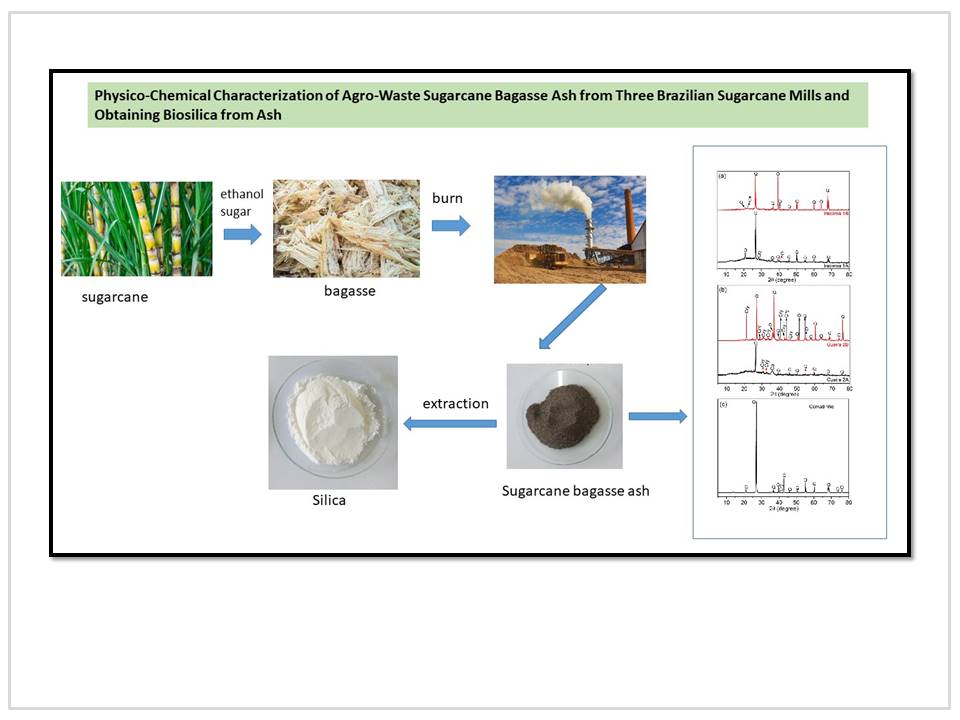Chemical Science & Engineering Research
Title
Physico-Chemical Characterization of Agro-Waste Sugarcane Bagasse Ash from Three Brazilian Sugarcane Mills and Obtaining Biosilica from Ash
Authors
Rovani S.,a Santos J.J.,b Carvalho F.B.,a Ramos N.P.,c Saldanha M.,c Morandi M.A.B.c and Fungaro D.A.*a
aInstituto de Pesquisas Energéticas e Nucleares (IPEN-CNEN/SP) - Av. Prof. Lineu Prestes, 2242, Cidade Universitária, 05508-000, São Paulo, SP.
bInstituto de Química, Universidade de São Paulo - Av. Prof. Lineu Prestes, 748, Cidade Universitária, Box 26077, 05508-000, São Paulo, SP.
cEmbrapa Meio Ambiente. Rod. SP 340, km 127, 5. Caixa Postal 69 Jaguariúna, SP.
*Corresponding author E-mail address: dfungaro@ipen.br (Fungaro D. A.)
Article History
Publication details: Received: 21st November 2022; Revised: 10th March 2023; Accepted: 10th March 2023; Published: 29th March 2023
Cite this article
Rovani S.; Santos J.J.; Carvalho F.B.; Ramos N.P.; Saldanha M.; Morandi M.A.B.; Fungaro D.A. Physico-Chemical Characterization of Agro-Waste Sugarcane Bagasse Ash from Three Brazilian Sugarcane Mills and Obtaining Biosilica from Ash. Chem. Sci. Eng. Res., 2023, 5(12), 1-7.

Abstract
The interest in transforming biomass into new sources of energy and new materials has been encouraging studies around the world. The ash resulting from the burning of straw and sugarcane bagasse, for example, is a material rich in silica. In the present study, samples of fly ash and bottom ash from sugarcane residues were collected in three different mills (Cerradinho Iracema and Guaíra), located in regions where the soils are classified as oxisols. The ashes were characterized by XRD, EDX, ICP-OES, SEM, FTIR spectroscopy and TGA/DTG techniques. Most ash samples showed silica as the main constituent (42-69%) and silica in crystalline form in all. Biosilica was obtained from ash samples using alkali extraction and acid precipitation. The physical and chemical properties of the extracted biosilica are described. The biosilica samples have amorphous phases and purity ranged from 93 to 97 wt.%. The results showed that the different origins of sugarcane residue ash used as raw material did not affect the quality of the extracted biosilica.
Keywords
sugarcane bagasse; biomass waste; agricultural residue ash; biosilica; sustainability